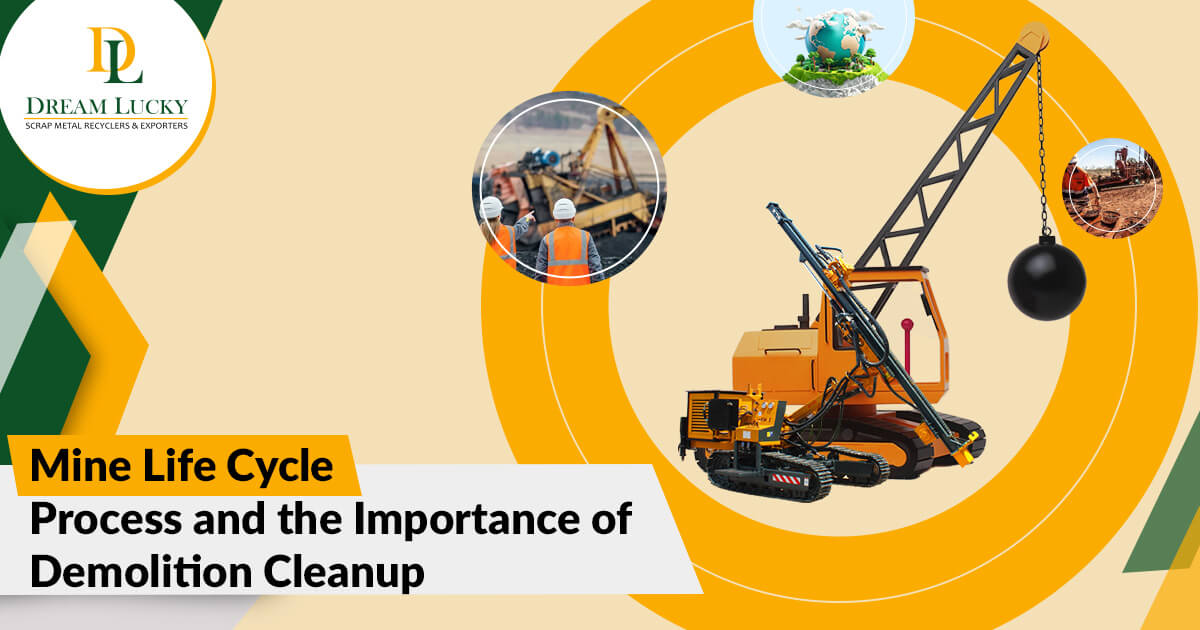
Mining is a significant part of Australia’s economy, contributing to jobs and the production of essential materials. However, the entire mine life cycle, from exploration to closure, involves much more than just extracting minerals—it requires careful planning and management to minimise environmental impacts.
It involves a series of stages, each with its own set of challenges and responsibilities. One of the most critical aspects of the mining life cycle is ensuring that, once the resources are exhausted, the land is restored and safe for future use.
This is where the role of demolition cleanup becomes essential.
Life Cycle of a Mine
The life cycle of a mine generally includes five key stages:
- Exploration and planning
- Building and commissioning
- Operation
- Decommissioning
- Rehabilitation and reclamation
Understanding these stages helps us appreciate the importance of managing the land responsibly at every step.
1. Exploration and Planning
Every mining project starts with exploration. Geologists and engineers conduct surveys to find areas rich in minerals.
Once they identify a viable deposit, they plan the project, considering both the environmental and social impacts. Proper planning is vital to minimise damage to the environment and ensure that the benefits of mining are shared with the local community.
2. Building and Commissioning
Once the planning is complete, the construction of the mine begins. This involves building infrastructure like roads, processing plants, and housing for workers.
During this stage, it’s crucial to consider how this infrastructure will be removed or repurposed once mining ends. Forward-thinking companies build with the future in mind, making it easier to dismantle and restore the area later.
3. Operation
This is the stage where mining activities are in full swing. Minerals are extracted and processed, often over several decades.
While the mine is operational, maintaining environmental standards is key. Regular checks and upgrades are carried out to ensure that the mine operates efficiently and safely, without causing unnecessary harm to the surrounding area.
4. Decommissioning
As the mineral resources are depleted, the mine begins to wind down. This is the decommissioning phase, where the focus shifts from extraction to safely shutting down operations.
Infrastructure that is no longer needed is isolated, and plans for demolition are put into place. This stage is crucial for ensuring that the site does not pose a risk to the environment or nearby communities.
5. Rehabilitation and Reclamation
The final stage of the mining life cycle is rehabilitation. The goal here is to restore the land to a stable, environmentally safe condition.
This might involve replanting vegetation, reshaping the land, and removing any hazardous materials. The ultimate aim is to return the site to a state where it can be used for other purposes, such as agriculture, recreation, or conservation.
The Role of Demolition Cleanup
Demolition clean up is a critical part of both the decommissioning and rehabilitation stages. Proper cleanup ensures that the land is safe, stable, and ready for its next use.
Here’s how it works:
1. Methodical Deconstruction
When it’s time to dismantle a mine, the process must be done carefully. This involves taking apart equipment and structures in a way that minimises harm to the environment.
For example, hazardous materials need to be handled with care and disposed of correctly. Recycling materials like metals can also help reduce waste and benefit the environment.
2. Thorough Site Clearance
Clearing the site is an essential part of preparing it for rehabilitation. All debris and contaminants need to be removed to make way for new growth or development.
This is a meticulous process that ensures nothing harmful is left behind.
3. Environmental Compliance
In Australia, strict environmental regulations govern how mining sites are decommissioned and rehabilitated. Companies must conduct environmental assessments to identify any remaining risks and address them.
Compliance with these regulations is not just about following the law—it’s about doing the right thing for the planet and future generations.
4. Community Engagement
Mining companies also need to engage with the communities that live near the site. By involving locals in the process, companies can address concerns, build trust, and ensure that the rehabilitation process meets the needs of everyone affected.
The life cycle of a mine in Australia involves more than just extracting minerals. It’s a complex process that requires careful planning, responsible operation, and thorough cleanup.
Demolition and site rehabilitation is essential to ensure that, after the mine closes, the land can be safely and sustainably reused. For those involved in these processes, it’s important to consider recycling opportunities—contact us for scrap metal recyclers Perth to help manage materials responsibly while supporting environmental protection efforts.
Omer Bekhit
The dedicated owner and operator of Dream Lucky Scrap Metal. He has been at the forefront of ethical scrap metal recycling, exporting, and dealing. With a hands-on approach to the business, Omer ensures that every transaction is conducted with transparency and sustainability in mind.